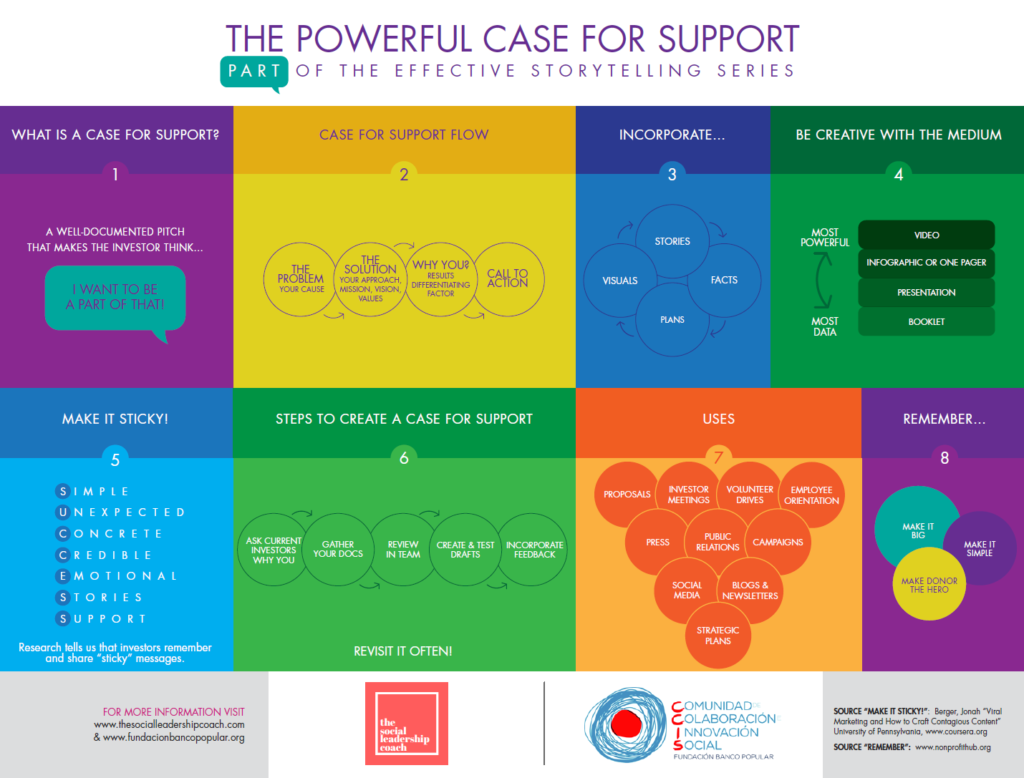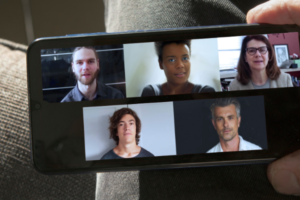This post is also available in:
 Spanish
Spanish
A case for support is an essential tool to woo donors and potential partners. Does your organization have one? Here are my tips for a powerful case for support.
What is a Case for Support?
Have you ever watched a video on a movement and thought “Wow, I need to be a part of that!”? Have you ever received a donor letter from a non-profit and became so moved you immediately sent them money? If yes, then you have experienced a case for support.
A case for support is a well-documented pitch that moves its audience to action. It’s your best argument for getting people involved in your cause. Think of it as an elevator pitch 2.0 (FYI, you can get a free guide to an elevator pitch by subscribing here).
What is the Flow of a Case for Support?

The pitch usually contains sequential steps designed to persuade.
1 – The Problem
This is where you explain the problem your cause is trying to solve. Why is this problem important to your audience?
2 – The Solution
What is your organization doing to solve the problem? Talk about your approach, your vision for the future, your mission and your values. The goal is to make your solution the audience’s as well.
3 – Why You?
Why should the audience trust your organization? What makes you different? This is your moment to showcase your results and track record.
4 – Call to Action
The audience believes in you – now what? In this step, ask to do something specific. You tailor this for each type of stakeholder. A potential donor? Ask for a donation. The public on social media? Maybe ask them to subscribe.
Incorporate Different Storytelling Elements
Audiences respond to a mix of persuasive elements. So remember to incorporate:
Facts – Hard data fosters credibility, especially when talking about the impact of a problem or results.
Stories – Individual stories bring your mission to life and tap into people’s natural empathy.
Plans – Stakeholders need to see where you are going so they can join you.
Visuals – “A picture is worth a thousand words”.

Be Creative with the Medium
You have lots of different options to present your pitch. It just depends on your audience. Today, videos are the most powerful way to connect with lots of people. Yet, they are not great for relaying lots of facts. Therefore, a major donor might feel more comfortable with a booklet with lots of data. This can also be achieved through a website.
One pagers are useful for staff and Board members as they meet with various stakeholders. This is an excellent way to ensure a unified message.
Make it Sticky

In the social media age, all messaging needs to be sticky. That means it should be focused on making the audience the hero of your story. Your case for support is about how your potential donor or partner can change the world.
A case for support has to strike the right balance of SUCCESS.
A Case for Support is not Just for Fundraising
You can use this type of pitch for anything that requires a message about your organization. This can include a strategic plan, donor letters, proposals, volunteer drives, new employee orientation, press releases, social media, public relations and all kinds of campaigns.
Get Started on Your Case for Support

Ready to create your own pitch? This is best done in collaboration with others on your team. These are the steps I recommend:
1 – Ask Current Stakeholders Why You
What messaging has worked for you in the past? Why would someone pick your organization? The best way to find this out is to ask the people who have already picked you. You can do this via survey, focus groups or interviews.
2 – Gather Your Documents
You probably have a zillion pieces for your case for support in past proposals, reports, donor letters, photos etc. Put it all together to review.
3 – Review in a Team
Get a crew together to review your documents. Make sure to include people with a wide variety of perspectives: insiders, outsiders, volunteers, staff, donors, Board members, marketing people, filmmakers, teachers, publicists, sales people, social media influencers, researchers, those you serve, old, young, different ethnicities, different genders, etc.
4 – Create and Test Drafts
Create a draft version of your Case for Support and test it with a potential donor or partner? How do they react? What works? What doesn’t? Do this as many times as necessary.
5 – Incorporate Feedback
As you test drafts, be sure to incorporate feedback. Track response rates. Always be on the look out on how to make your case for support more effective.
Free Infographic Summary
Thank you to the Fundación Banco Popular and its Community for Collaboration and Social Innovation for sponsoring the free infographic that accompanies this article. To download it, please click on the image below.

Enjoyed this Article?
Please comment and share this article with your network using the social media buttons below. You can also check out other articles in my blog. Don’t forget to subscribe to this site for exclusive offers and content. I respect my subscribers and their privacy. Thanks!







Leave a Reply
Your email is safe with us.